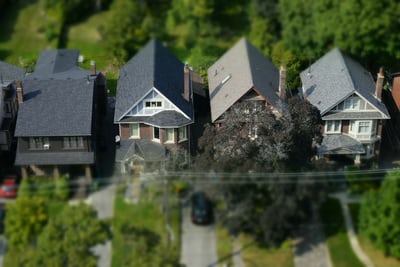Understanding Non-Physical Changes.
To start with, what’s a non-physical change? A non-physical change refers to alterations in the legal or planning status of land without any physical modifications. Let’s illustrate this with an example:
Joe has acquired an investment property and has owned it as a rental for five years.
He knows the land can be subdivided, so he successfully applied for and was granted resource consent to divide the single lot into three. However, due to market uncertainty, Joe decides to “sell the dream” by marketing the undivided lot with the benefit of the resource consent.
Joe assumes that because he hasn’t physically subdivided the land, tax provisions under Sections CB 12 and CB 13 (which apply to subdivisions) won’t affect him. However, obtaining resource consent is an example of a non-physical change to the land, which can have tax consequences under Section CB 14.
How Does Section CB 14 Apply?
Section CB 14 taxes profits from land sales if:
- The land is sold within ten years of acquisition; and
- At least 20% of the profit comes from a non-physical change in the land’s status.
Common examples of non-physical changes include:
- Changes to, or the likelihood of changes to, a district plan
- Granting of resource consents
- Environment Court decisions
- Removal of heritage protection orders
For CB 14 to apply, the change must exist at the time of disposal and must have contributed to the profit.
Determining the Impact of a Non-Physical Change
A key aspect of CB 14 is determining whether at least 20% of the gain comes from the non-physical change. Courts have suggested that this is assessed by comparing:
- The land’s market value before the change, and
- The land’s market value after the change, rather than the final sale price.
This means obtaining valuations is crucial. If the price increase is primarily due to market conditions rather than a specific non-physical change, CB 14 may not apply.
Tax Reduction Over Time
An abatement provision under CB 14 gradually reduces taxable income. For each full year the land is held, the taxable portion reduces by 10%, reaching zero after ten years.
Exemptions Under CB 18 and CB 22
Certain exclusions can prevent CB 14 from applying:
- CB 18 – Residential Exclusion:
Applies if the land was acquired for residential purposes or if it was sold to a buyer who will use it for residential purposes. - CB 22 – Farming Exclusion:
Applies if the land was acquired for an agricultural business and is sold to someone who will continue using it for the same purpose.
The logic behind these exemptions is that if the use of the land does not change after disposal, then the non-physical change was not a key driver of the sale.
Joe’s Tax Position
Let’s apply these rules to Joe’s case:
- Original Purchase Price: $1,000,000
- Value Without Resource Consent: $1,200,000
- Sale Price (With Resource Consent): $1,500,000
- Profit Due to Non-Physical Change: $300,000 (more than 20% of total gain)
Because Joe sold the land to a developer, the $500,000 profit is taxable under CB 14. However, since Joe has owned the land for five full years, his taxable income is reduced by 50%, leaving him with $250,000 of taxable profit.
Why No Residential or Farming Exclusion?
Joe cannot claim the CB 18 or CB 22 exclusions because:
- The land was an investment property, not his residence.
- The buyer is not using the land for residential or agricultural purposes.
Final Thoughts
In practice, the subjective nature of CB 14 often means it is overlooked by taxpayers and even Inland Revenue. However, it lurks there in the legislation and remains an important provision, creating unexpected tax liabilities, a trap for those unaware of its implications.
If you’re unsure how CB 14 may affect your property transactions, seeking specialist tax advice can help ensure compliance and minimize risks.
